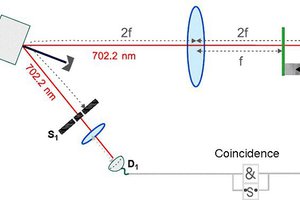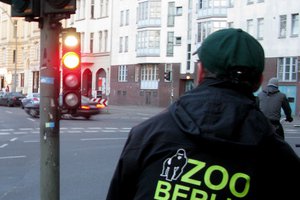The first idea I had many years ago consisted of simple polarized filters in the path of the headlight's beam on one car and another filter either attached to driver's glasses or the windscreen of an oncoming car. The thought was the light from the headlight would be filtered by the glasses and yet leave unobstructed view all around the light source.
Apparently, I was not the only one thinking about this, as this has been tried and met with some success.
With the relatively recent advent of high power LED technology being employed as vehicle headlights, we have the ability to modulate the light output and synchronize it with an electronic LCD shutter.
As it happens, active shutter LCD glasses have been available for a while for use with 3D TV sets. Their operation consists of receiving a signal from the TV which tells the glasses to either darken the left or the right LCD lens in sync with different images on the TV. This results in each eye seeing a different image and the brain interpreting the 3D effect. The shutter opening and closing happens at a high rate so the eye only sees smooth motion with some dimming.
The idea is to use this existing technology to sync with a signal from the oncoming vehicle such that when the oncoming car's headlights (car A) are on for a few milliseconds, the lenses in the glasses of the other driver (car B) will be off and blocking the light. When headlights on car B are switched on, car A's lights will be off and driver's glasses in car A will be on and allowing light through.
Thoughts:
- Since the lights and shutter glasses will be active only half the time, apparent brightness will suffer- at least to a 3rd party observing without glasses. But will that matter to a glasses wearer? Since there will be no oncoming glare, there should be adequate illumination. When the user's glasses are "open", his car headlights are on.
- How does the oncoming car signal to a glasses wearer that it is modulating it's headlights? Do we just use the flashing of the light? I don't think this would have the range required. I'm thinking we'd need an RF carrier with a specific signal on top.
- How do we enable the system to negotiate the modulation of each cars headlights and glasses? Which car "blinks" first? What if there are multiple cars?
- The system would not necessarily require glasses. It could use a flip-down LCD similar to the sun visors now.
- The glasses need to fail safe. If batteries stop working, the glasses need to default to a state of light transmission.
- For a system like this to work, it would require widespread adoption across many or all automakers. At first this seems like a huge undertaking- and it would be, but as can be demonstrated with any new safety feature, it would become a selling feature or even mandated by law much the same as other safety features have been in the past. Anti-lock brakes, tire pressure monitor systems, traction control system etc. have all been embraced by automakers to produce a safer product.
Handshake protocol:
Suppose we use an RF signal. We could encode an auto-negotiation protocol to let each car know what the other is doing.
- As cars approach one another, each is transmitting a signal letting the other know that it can be either a "Leader" or a "Follower". This is the default data packet. Leader and Follower are only designations to indicate which car will enable headlights on a pulse high (Leader) and which one will enable headlights on a pulse low (Follower).
- Within a few milliseconds, based on a unique hardware ID, signal strength or even randomness, the cars have negotiated who is Leader and who is Follower and this designation is locked in for this encounter. Other cars that approach from behind these first, locked-in cars will be transmitting the default signal until it becomes aware of a signal already designated as either Follower or Leader and will adjust its RF transmission as well as its headlight switching control accordingly.
Security:
To prevent nefarious hacking and sending...
Read more »
 mircemk
mircemk


 trax
trax